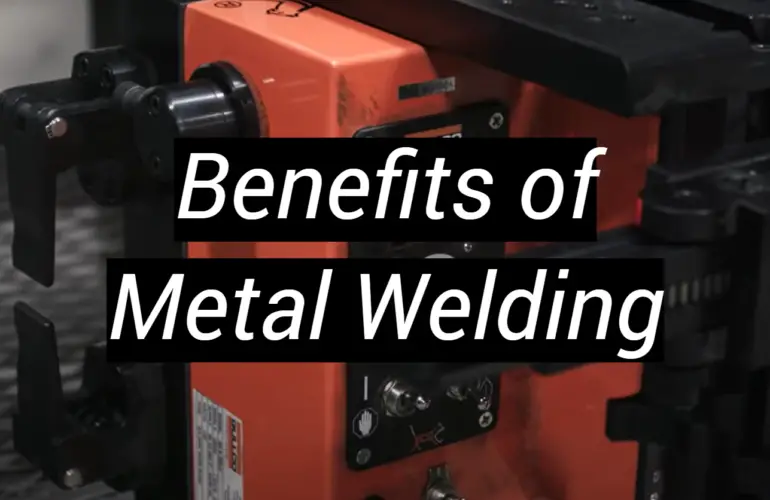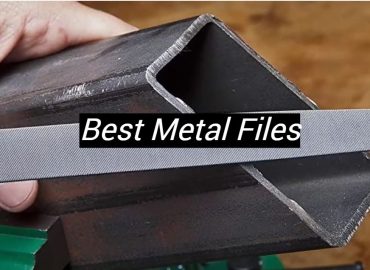Let’s embark on an exhilarating exploration of the fascinating world of metal welding. This intricate technique might initially appear daunting, but as you delve into it, you’ll discover its remarkable versatility and countless benefits. Whether you’re a passionate DIY enthusiast, a skilled artist seeking new creative outlets, or a seasoned professional in the manufacturing industry, metal welding opens up an expansive realm of possibilities. From crafting bespoke furniture that perfectly complements your space, to skillfully repairing essential equipment, or even fashioning intricate sculptures that captivate the imagination, the applications of metal welding are truly limitless. However, the allure of this craft goes beyond its practical uses; it also encompasses the profound sense of accomplishment that arises when two seemingly disparate pieces of metal are seamlessly joined together.
Benefits of Metal Welding
When it comes to the benefits of metal welding, there are several key points that are worth highlighting. Firstly, welding is not only incredibly durable, but it also provides structural integrity that surpasses the original material. This ensures not only durability but also longevity, making it an ideal choice for various applications.
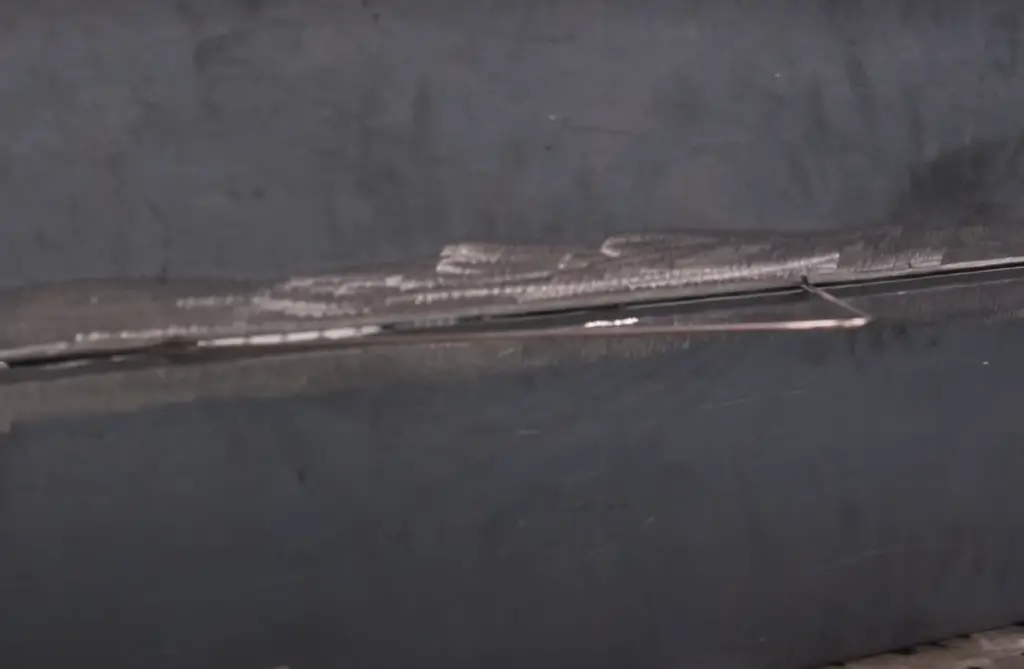
Secondly, this technique offers significant cost savings, particularly in large-scale construction and manufacturing projects. By seamlessly joining metals, the need for additional parts and components is reduced, resulting in a leaner and more efficient production process. This not only saves time but also reduces expenses, making welding a cost-effective solution.
With welding expertise, individuals can contribute to various industries and become sought-after professionals.Lastly, the process of welding itself can be incredibly rewarding. It offers a sense of accomplishment and satisfaction as you create or repair something with your own hands. The ability to transform raw materials into functional and aesthetically pleasing objects or structures is truly gratifying.
In conclusion, the benefits of metal welding extend beyond just durability and cost savings. It is a skill that empowers individuals, contributes to various industries, and provides a sense of fulfillment in the process.[1]
Laser welding
Now let’s take a deeper look at one particular type of welding: laser welding. This modern technology uses a highly focused laser beam to carefully join pieces of metal together. Due to its precision and accuracy, laser welding is ideal for tasks that require accuracy, such as in the electronics industry or jewelry.
One of the important benefits of welding with lasers is its extreme speed. In comparison to standard methods of welding, laser cutting is much faster, which significantly increases efficiency and productivity. In addition, due to its precision, laser welding often requires less post-weld cleanup, resulting in time and resource savings.
However, just like any other skill, mastering laser welding requires practice and a thorough understanding of the underlying technology. However, once mastered, this skill opens up a whole new dimension of possibilities in the field of metal welding. From intricate designs to complex structures, this welding opens up endless potential for innovation and creativity.
TIG welding
Now let’s dive into another exciting form of welding – Tungsten Inert Gas (TIG) welding. TIG welding is a versatile and highly precise technique that uses a consumable tungsten electrode to deliver current to the arc. The advantage of this is the unprecedented control it gives the welder, which results in extremely aesthetic and high-quality welds.

This method is particularly effective for welding thin stainless steel profiles as well as base metals such as Aluminum, Magnesium and Copper alloys. TIG welding has many advantages, but one of the most important is the exceptional quality of the welds produced.
However, it is worth noting that TIG welding, compared to other welding methods, is generally slower and requires a high level of skill. However, for those who strive for excellence in their work, especially in industries such as aerospace, automotive, or art, where the aesthetic appearance of the weld is crucial, TIG welding is an unbeatable choice.
As with any skill, mastering TIG welding necessitates practice and dedication. But the remarkable results achieved through this method make every ounce of effort expended well worth it.
MIG/MAG welding
As we delve deeper into the fascinating world of welding techniques, let’s now shift our focus to the incredibly versatile Metal Inert Gas (MIG) and Metal Active Gas (MAG) welding methods. These two techniques, categorized under the umbrella of Gas Metal Arc Welding (GMAW), employ a continuous solid wire electrode that is heated and meticulously fed into the weld pool by a welding gun.
MIG welding, where the ‘I’ represents ‘Inert’, utilizes an inert gas, typically Argon, which acts as a protective shield, preventing any potential contamination of the weld pool. Renowned for its adaptability and user-friendly nature, MIG welding has become a popular choice for both novice welders and seasoned professionals. Its applicability extends across a wide spectrum of metals and thicknesses, ranging from delicate sheet metal to robust structural plates.
On the other hand, MAG welding (where ‘A’ signifies ‘Active’) employs a combination of active gases or gas mixtures that can interact with the molten weld pool. This particular technique finds its predominant use in welding unalloyed, low-alloy, and high-alloy steels. The allure of MAG welding lies in its remarkable productivity and ability to produce welds of superior quality.
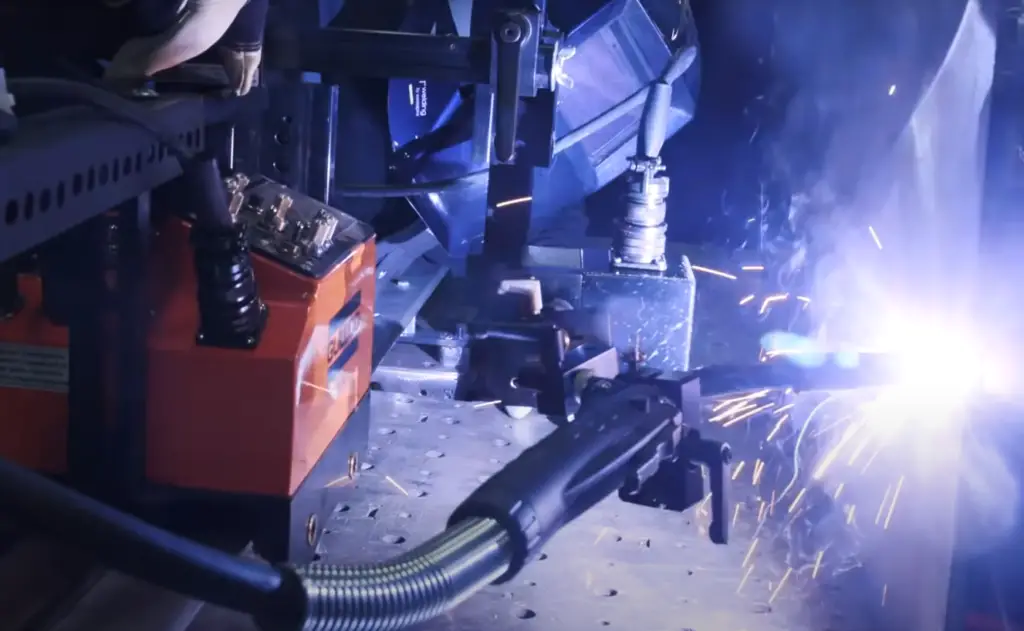
Both MIG and MAG welding are renowned for their efficiency and speed. These methods allow for uninterrupted, longer welds, minimizing the occurrence of defects and ensuring a flawlessly clean finish. However, like any other welding technique, mastering MIG and MAG welding requires practice and experience. Once you have honed your skills, these welding methods can become invaluable assets in your welding repertoire, empowering you to undertake diverse projects with confidence and unparalleled efficiency.
The beauty of MIG and MAG welding lies in their versatility, reliability, and effectiveness. Whether you are a hobbyist working on intricate creations or a professional tackling large-scale industrial projects, these welding techniques open up a world of possibilities, enabling you to bring your vision to life with precision and finesse.
Resistance welding
Resistance welding is highly valued in various industries for its exceptional consistency, remarkable speed, and impressive cost-effectiveness. This method, widely employed in the automotive industry, is renowned for its ability to consistently produce high volume runs with utmost reliability. The most common types of resistance welding techniques include Spot Welding, Seam Welding, and Projection Welding, each serving its unique applications and offering distinct advantages.
It is important to note that while resistance welding proves to be incredibly efficient and economical for certain applications, it does require a significant initial investment in specific machinery. However, for those seeking a quick, reliable, and cost-effective method for joining sheets of metal, resistance welding emerges as a perfect fit, ensuring optimal results that meet the highest standards of quality and durability.
Eight Advantages Why Metal Welding is a Preferred Manufacturing Process
Excellent Strength of Joints
One of the incredible benefits of metal welding is the excellent strength it imparts to the joints. The bonds created through welding are not only robust but also surpass the durability and lifespan of the base materials themselves. This is because the welding process not only joins two pieces of metal together but also allows them to intermingle on a molecular level, creating an unbreakable bond that withstands the test of time.
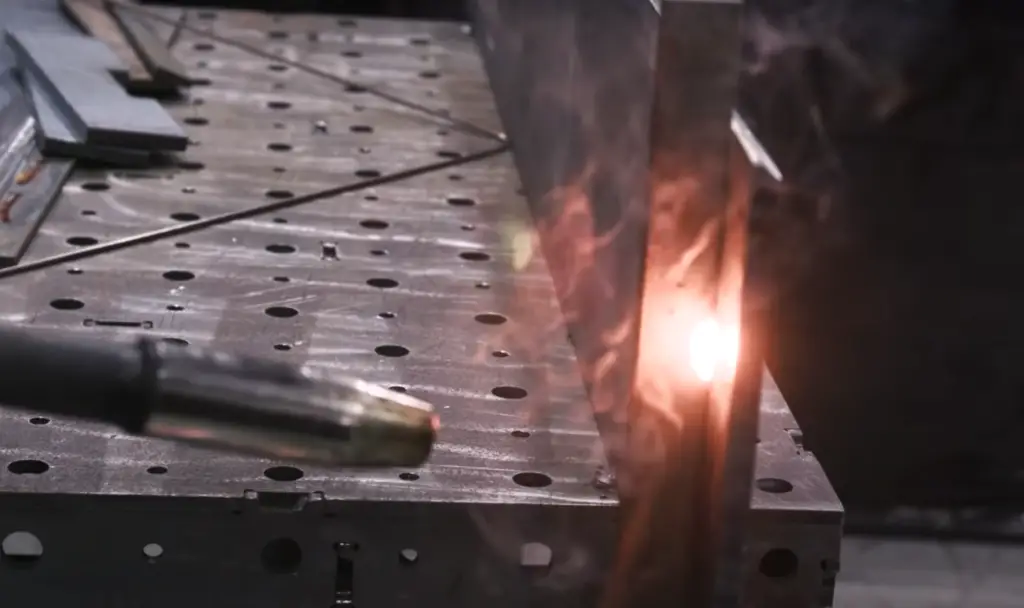
Whether it’s the construction of towering skyscrapers or the precise assembly of high-performance automobiles, the integrity of a welded joint is of utmost importance. The superior strength of welded structures makes them highly resistant to impact, pressure, and other strenuous conditions, providing a level of reliability that other joining methods simply cannot match.
The art of welding involves a meticulous fusion of metals, transforming individual components into a unified and fortified whole. It is a testament to human ingenuity and craftsmanship, where precision and skill intertwine to create structures that stand tall and endure. The beauty of welding lies not only in its functional purpose but also in the artistry and engineering behind it, as welders leave their mark in the form of seamless and resilient connections.
High Precision Control with Welding
Another significant advantage of metal welding is the exceptional level of precision it affords. Through advanced welding techniques, such as laser welding or Tungsten Inert Gas (TIG) welding, industries that require utmost accuracy can achieve remarkable results. From the intricate art of jewelry making to the intricate world of electronics, and even in the precision-focused aerospace and automotive sectors, welding offers unparalleled control over the joining process. This precision not only ensures that the final product meets stringent quality requirements but also contributes to its overall reliability and performance. Laser welding, in particular, offers incredible control over depth and penetration, resulting in minimized heat affected zones and reduced distortion. In essence, the exceptional precision offered by welding not only enhances the aesthetic appeal of the product but also significantly improves its functionality and extends its lifespan.
Welding Speed
One often understated advantage of metal welding is the exceptional speed at which it can be performed. This is particularly true for advanced welding methods like laser welding and Metal Inert Gas (MIG) or Metal Active Gas (MAG) welding, which offer significantly faster results compared to traditional techniques. The increased speed not only enhances efficiency and productivity but also makes these welding techniques highly sought after in industries that prioritize time-efficiency.
Moreover, the fast-paced nature of welding does not compromise the quality of the welds. Quite the contrary, the quick formation of welds often leads to stronger and cleaner joints. This is because rapid welding minimizes the heat affected zone, reducing the likelihood of structural weaknesses or deformations. In essence, welding offers a unique blend of speed and quality that is unparalleled by other metal joining techniques.

By leveraging the swift execution of these advanced welding methods, industries can achieve remarkable time savings without compromising the integrity and durability of the welded materials. This combination of efficiency, precision, and strength makes metal welding an indispensable solution for various applications.
Welding is a Cost-effective Approach
One of the most compelling benefits of metal welding is its cost-effectiveness. When compared to other joining methods, welding can significantly reduce costs by eliminating the need for additional parts or components. In a welded joint, the base materials are directly joined together, minimizing the need for supplementary assembly hardware like nuts, bolts, or rivets. This leads to a leaner, more efficient production process, resulting in substantial cost savings.
Furthermore, welding can be automated, which reduces labor costs and increases production speed. By implementing robotic welding systems, manufacturers can achieve higher levels of precision and consistency, resulting in improved product quality. Additionally, the use of advanced welding techniques such as laser welding or friction stir welding can further enhance efficiency and reduce material waste.
Moreover, the versatility of welding allows for the fabrication of complex structures and components, opening up a wide range of design possibilities. Whether it’s creating intricate patterns or joining dissimilar metals, welding provides the flexibility to meet diverse manufacturing requirements.
Even though the initial investment in welding machinery and equipment might be substantial, the long-term cost benefits resulting from improved productivity, efficiency, and reduced material usage make welding a financially sound choice for many industries. By considering the specific needs and goals of a project, companies can harness the advantages of welding to achieve cost savings and gain a competitive edge in the market.
Superior Lifespan of Joints
A highly notable advantage of metal welding lies in the exceptional lifespan it offers to the joints. Through the robustness of the bonds created during the welding process, the longevity of the welded components often surpasses that of the base materials, ensuring long-term durability that is second to none. This is especially crucial in industries where the life expectancy of a product plays a pivotal role in determining its overall performance and cost-effectiveness. The extended lifespan of welded joints not only guarantees superior longevity but also translates into reduced maintenance or replacement requirements, further augmenting the cost-efficiency of welding.
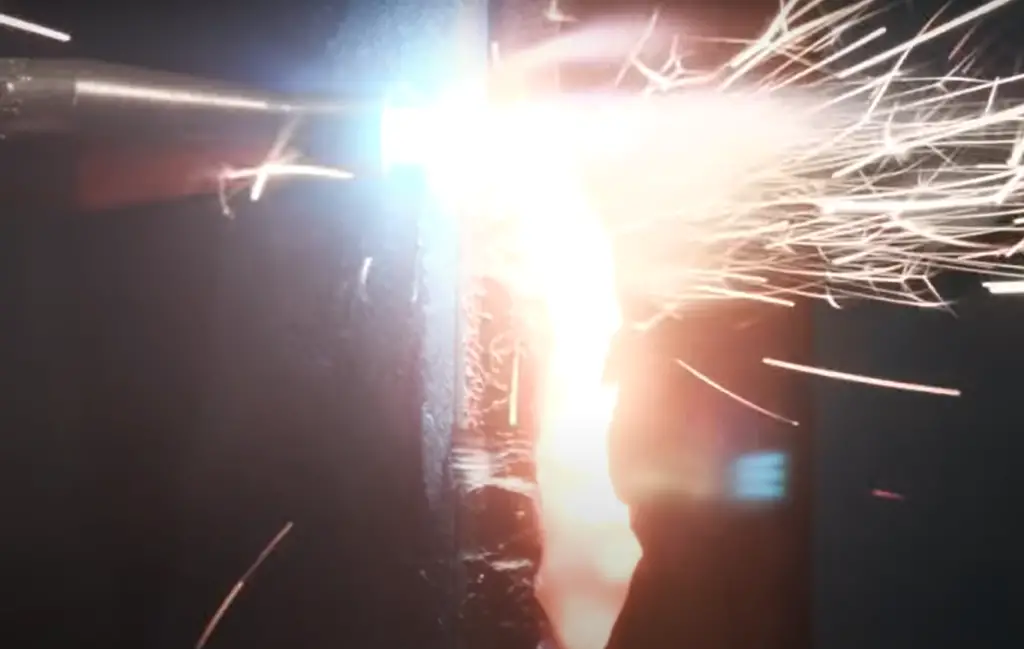
Hence, the unparalleled lifespan of the joints created through welding makes it an ideal choice for applications that demand utmost longevity, unrivaled strength, and unwavering reliability. With its ability to enhance the structural integrity and longevity of components, metal welding stands as an indispensable technique in a wide range of industries, ensuring the integrity and performance of products for years to come.
Weld Requires Low (or No) Maintenance
A key advantage of metal welding is the minimal maintenance required for the resulting joints. Unlike other joining methods, welded joints become an integral part of the base material, ensuring durability and strength that matches the surrounding metal. This not only reduces the risk of wear and tear over time but also eliminates the need for frequent repairs or replacements.
Moreover, the fusion of base materials during the welding process creates a solid and seamless connection, leaving no loose parts or additional components that could potentially fail or require maintenance. This particular characteristic is especially valuable in sectors where uninterrupted operation is paramount, such as manufacturing or industrial production.
The low maintenance factor, combined with the longer lifespan of welded joints, makes welding a highly cost-effective and reliable method for joining metal parts. By extending the overall service life of the product and minimizing unexpected downtime caused by joint failures or maintenance, welding adds substantial value to the overall process.
Therefore, whether it’s for small-scale projects or large industrial applications, the inherent low maintenance nature of welded joints offers unparalleled benefits that contribute to the efficiency and longevity of the entire system.
Joining of Dissimilar Metals
The ability to join dissimilar metals is not only a profound advantage of welding but also a testament to its versatility. While traditional methods often struggle with joining different types of metals due to their varying melting points, thermal expansion rates, and metallurgical properties, welding techniques have risen to the challenge. One such technique, friction stir welding, has emerged as a champion in successfully combining dissimilar metals into a single, strong joint.
This remarkable capability offers immense flexibility in design and manufacturing processes, paving the way for more innovative and efficient products. By broadening the range of possible material combinations, welding dissimilar metals encourages creativity and pushes the boundaries of what is achievable.
Take the automotive industry, for example. With the ability to join lightweight metals like aluminum with stronger metals like steel, vehicles can benefit from enhanced fuel efficiency without compromising safety. The result is a harmonious combination of strength and lightness, providing both economic and environmental advantages.
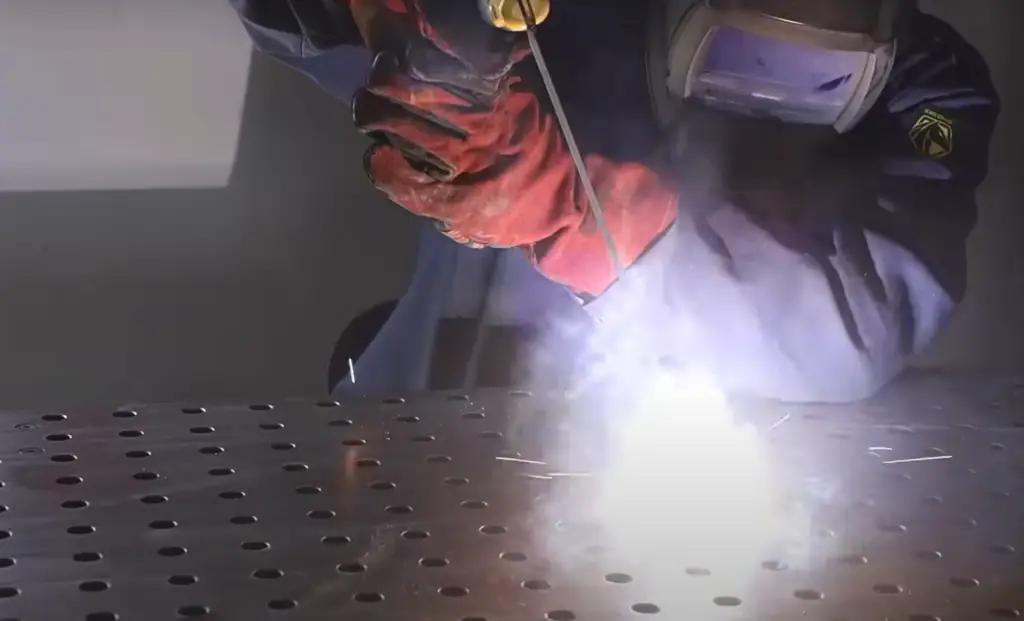
In summary, the ability to weld dissimilar metals truly opens up a world of possibilities in terms of design and functionality, empowering engineers and designers to create groundbreaking solutions that were once deemed impossible.
Aesthetic aspect
Another noteworthy benefit of metal welding lies in the aesthetic superiority it offers. Welding, particularly techniques like TIG (Tungsten Inert Gas) welding, can create smooth, clean joints that seamlessly blend into the overall design of the product, enhancing its visual appeal. By eliminating the need for bulky and visually disruptive mechanical fasteners, welding ensures a sleek and unblemished finish, elevating the product’s market appeal. Furthermore, the versatility of welding enables the incorporation of intricate detailing and the creation of unique, aesthetically pleasing shapes and structures, opening up a wide range of design possibilities. In industries where the visual attractiveness of the final product is crucial, such as automotive or consumer goods manufacturing, welding plays a vital role in enhancing the overall aesthetic aspect of the finished product, making it more captivating and desirable. Hence, beyond its practical benefits, welding significantly contributes to the visual appeal and marketability of the end product, elevating its desirability and making it stand out in the competitive marketplace.[2],[3]
FAQ
What is the importance of welding metals?
Welding metals is a critical process in numerous industries, ranging from automotive and aerospace to construction and manufacturing. Its importance lies in its ability to create robust, durable, and reliable joints that can withstand significant stress and strain. Welding offers a high level of precision and control, resulting in joints with remarkable strength and integrity. It enables the joining of dissimilar metals, allowing for a broader range of material combinations and innovative designs. Moreover, the low-maintenance nature of welded joints contributes to the longevity and reliability of the final product. Additionally, the aesthetic aspect of welding enhances the visual appeal of the product, a factor that is crucial in several markets. Therefore, welding metals plays a pivotal role in producing high-quality, efficient, and durable products that meet various industry demands and standards.
What are 3 advantages of arc welding?
Arc welding offers several notable advantages that make it a popular choice in various industries.
Cost-Effective: One of the primary advantages of arc welding is its cost-effectiveness. The equipment used in arc welding is typically less expensive than that used in other types of welding, making it an affordable option for many businesses. In addition, arc welding can often be performed with less expensive consumables, further reducing the overall cost.
Versatility: Arc welding is extraordinarily versatile. It can be used to weld many different types of metals and alloys, making it suitable for a wide range of applications. This versatility extends to the environments in which arc welding can be performed. Unlike some other types of welding, arc welding can be successfully performed both indoors and outdoors.
Ease of Learning and Use: Arc welding techniques are generally easier to learn than many other types of welding, contributing to its widespread use. This makes it a more accessible option for beginners or those with less technical training. Furthermore, the process of arc welding itself is relatively straightforward, which allows for greater productivity and efficiency.
Is welding a useful skill?
Absolutely! Welding is an incredibly useful skill, both professionally and personally. From a professional standpoint, there is a consistent demand for skilled welders in various industries such as construction, automotive, aerospace, and manufacturing, to name just a few. Having welding skills can open up a wide array of career opportunities and often leads to secure, well-paying jobs. On a personal level, welding is also a useful skill for DIY projects at home. It allows you to repair broken metal items, create custom metalwork, and even build structures like fences or furniture.
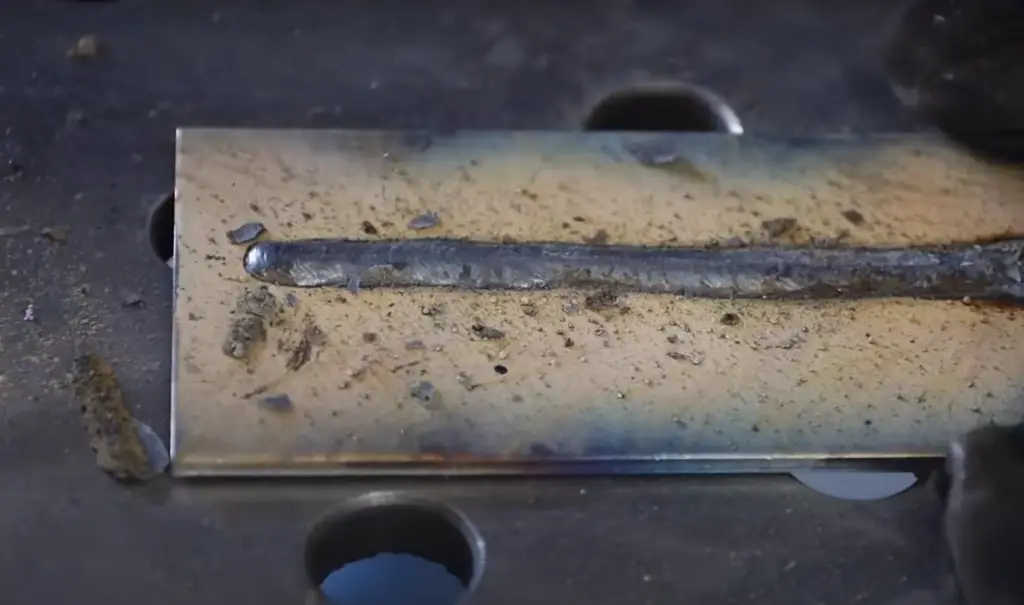
Moreover, the satisfaction derived from creating or repairing items with your own hands is immeasurable. So, whether you’re considering it as a career or a hobby, learning to weld can indeed be a valuable investment of your time.
How does welding affect the metal?
Welding profoundly impacts the properties and structure of the metal. When heat is applied during the welding process, it induces a series of thermal cycles, leading to a variation in the mechanical and metallurgical properties within the heat-affected zone. The high temperatures cause the metal to melt and form a weld pool. As this pool cools, it solidifies to form a fused joint, altering the microstructure of the metal. This can result in changes to the hardness, strength and ductility of the metal. While welding can cause potential weaknesses such as residual stress and distortion, these can be effectively managed with proper techniques and post-welding treatments. Thus, even though welding changes the metal’s properties, the end result is a strong, durable joint that can withstand substantial stress.
What are the advantages and disadvantages of welding?
When it comes to the advantages of welding, the foremost is the creation of strong, durable joints. Welding provides superior bonding between metals, which results in joints that can handle significant stress and strain. It also offers the flexibility of working with a range of materials and designs, contributing to its wide applicability across various industries. Additionally, some forms of welding do not require consumable materials, which can result in cost savings over time. Lastly, the aesthetic appeal achieved through welding techniques like TIG is a boon in sectors where the visual aspect of a product plays a crucial role.
However, welding also has its share of disadvantages. Primarily, it involves a high initial investment in terms of machinery and protective equipment. It can also entail a steep learning curve for beginners and requires skilled operators for efficient execution. Safety is another concern associated with welding, given the potential risks of arc flash, burns, and harmful fumes. Additionally, while welding can achieve strong bonds, the process can alter the properties of the metal, potentially leading to weaknesses like residual stress and distortion. But, with proper techniques and post-welding treatments, these issues can be effectively managed. Thus, while welding has its drawbacks, its benefits often outweigh these, making it an indispensable process in many industrial applications.
Is metal welding hard?
The difficulty level of metal welding can vary depending on the specific welding method used, the materials involved, and the skill level of the individual. For beginners, there can be a steep learning curve, especially with complex welding techniques like TIG and MIG. It requires understanding of the properties of different metals, knowledge of safety protocols, and mastery of hand-eye coordination to control the welding torch accurately. However, with consistent practice and patience, these skills can be acquired over time. Some forms of welding, like stick welding, are relatively easier to pick up, making them more suitable for beginners. It’s important to remember that while welding can be challenging, the ability to create strong, durable metal structures can be incredibly rewarding. So, while it’s fair to say that welding can be hard, especially when starting out, with commitment and the correct training, it’s a skill that’s certainly within reach.
Useful Video: The Benefits of Welding Automation for Your Health
Conclusion
Metal welding, while requiring an initial investment and a considerable skill set, is undoubtedly a valuable skill to master. Its advantages, such as the creation of strong joints, versatility, and potential cost savings, far outweigh its downsides. The process of welding involves heating and melting metal pieces, allowing them to fuse together and form a solid bond. This technique not only enables the creation of robust and durable structures but also opens up a world of possibilities in terms of design and fabrication.
One of the remarkable aspects of welding is its ability to alter the properties of metal. By carefully controlling the heat and applying specific welding techniques, welders can manipulate the metal’s structure and properties to meet their desired outcomes. This means that different types of metal can be joined together, creating hybrid structures that exhibit enhanced strength and performance. Additionally, through the process of welding, metal can be shaped and formed into intricate and complex geometries, enabling the fabrication of custom-made components and structures.
The learning curve for welding may be steep, requiring dedication, practice, and continuous learning. However, the rewards of acquiring this skill, both on a personal and professional level, are substantial. Whether you’re contemplating welding as a hobby or a career, the time and effort invested in mastering this useful skill are certainly worthwhile. In a world where the need for skilled welders remains consistent across various industries, welding stands out as a practical and rewarding skill to pursue.
Furthermore, the demand for skilled welders extends beyond traditional industries. With the rise of advanced manufacturing technologies, such as additive manufacturing and robotics, welding skills are becoming increasingly valuable. The ability to combine traditional welding techniques with emerging technologies opens up new opportunities for innovation and specialization in fields like aerospace, automotive, construction, and even art and sculpture.
In conclusion, metal welding offers a multitude of benefits and opportunities. From creating strong and durable structures to unlocking design possibilities and adapting to evolving manufacturing trends, welding remains a practical and rewarding skill to develop. So, whether you’re drawn to the artistry of metalwork or the practicality of fabrication, embracing the world of welding can lead to a fulfilling and impactful journey.
References:
- https://markhammetals.com/benefits-of-metal-welding/
- https://proleantech.com/the-advantages-of-metal-welding-why-its-a-preferred-manufacturing-process/
- https://blog.thepipingmart.com/metals/advantages-and-disadvantages-of-welding/

